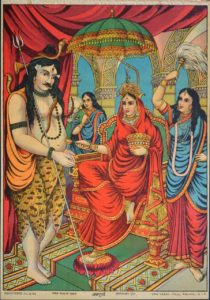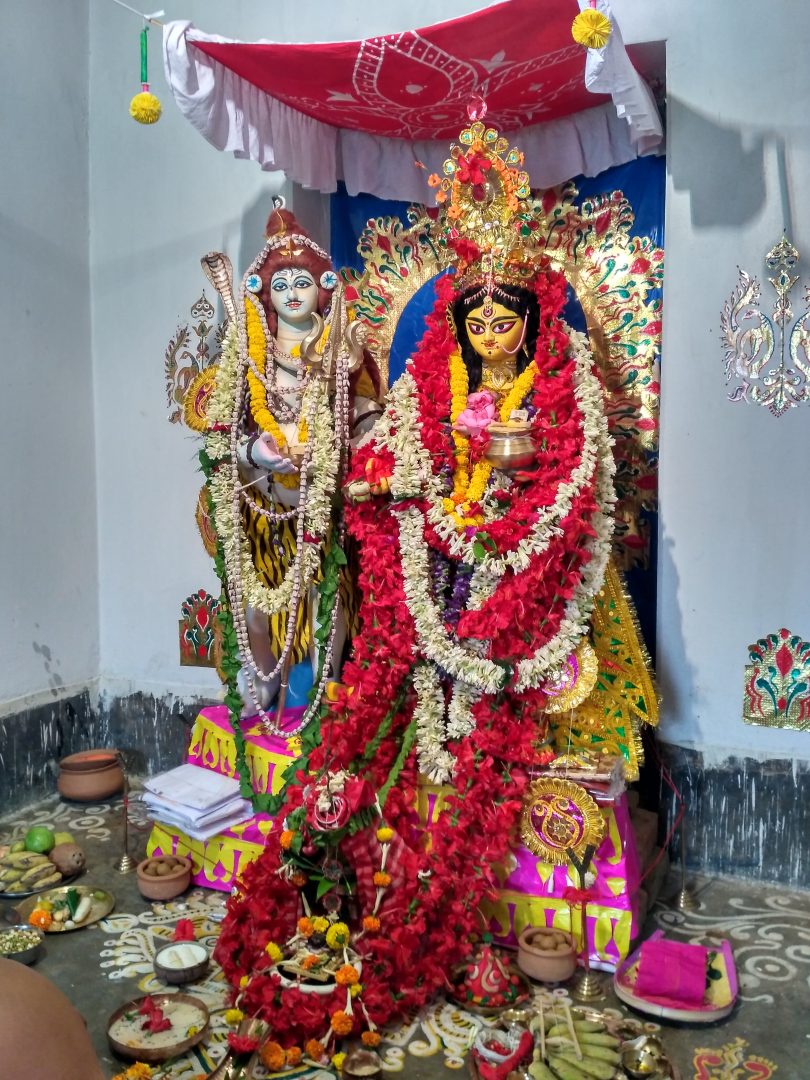Anna means ‘food’ in Sanskrit, and purna means ‘filled completely’.Annapurna is a Hindu goddess of food and cooking. It is believed that she is empowered with the ability to supply food to an unlimited amount of people. Annapurna is an incarnation of the other Hindu goddess Parvati, the wife of Shiva. She symbolizes the divine aspect of nourishing care. It is believed that when food is cooked with the spirit of holiness it becomes alchemy.
Images of goddess Annapurna are placed in dinner tables, restaurants, kitchens, etc. where the food is prepared and is served only after getting the blessings of this goddess. By doing this way people believe that they will never be out of food anytime in their life. The goddess Annapurna blesses the food and converts it to Amruta (A Sanskrit word for delicious and healthy food which gives immortality) which when eaten provides the nourishment required for our body.
Goddess Annapurna
The worship of Annapurna originated in the distant past when all food disappeared from the earth and all living beings were consequently in danger of perishing. They appealed to Lord Brahma for help.
 Brahma consulted with Lord Vishnu and then decided to awaken Lord Shiva from his ritual sleep (yoganidra) and give him responsibility for restoring prosperity. Shiva invited the goddess Annapurna to the earth and begged her for rice, which he then distributed throughout the world. Shiva made an agreement with Goddess Annapurna that if she looks afterlife before death, ensuring that no one went hungry in the sacred city of Kasi, he would ensure that they received moksha (freedom from the cycle of birth & death).
Brahma consulted with Lord Vishnu and then decided to awaken Lord Shiva from his ritual sleep (yoganidra) and give him responsibility for restoring prosperity. Shiva invited the goddess Annapurna to the earth and begged her for rice, which he then distributed throughout the world. Shiva made an agreement with Goddess Annapurna that if she looks afterlife before death, ensuring that no one went hungry in the sacred city of Kasi, he would ensure that they received moksha (freedom from the cycle of birth & death).
Annapurna is Kasi’s queen.
She is known in the Kasi Khanda as Bhavani, the female shakti of Bhava, “Being,” one of the names of Shiva. The name Annapurna means “She of Plenteous Food.” She is called the “Mother of the Three Worlds,” and she promises to those who come to her ‘food’.
Legend says when Vishnu adopted the Vamana avatar, the sky provided him the umbrella, Kubera provided him the bowl and Goddess Annapurna, the gracious hostess herself, offered bhiksha to Him. The idol of Annapurna always has a small vessel/ladle containing Annam (food) signifying that the worshiper is assured of food throughout his/her lifetime.
Temple art in India often depicts lord shiva with his begging bowl (skull), asking Annapurna to provide him food that gives the energy to achieve knowledge and enlightenment. There is a temple to this goddess in Varanasi. It was built by the Peshwa Balaji Baji Rao I in 1725. The shrines in this temple are dedicated to Ganesh, Gaurishankar (Siva), Hanuman and Surya (Sun-God).
Sri Adi Sankara wrote a sloka called ‘The Annapurna stotram’ which helps us pray goddess Annapurna and be blessed with her love.






